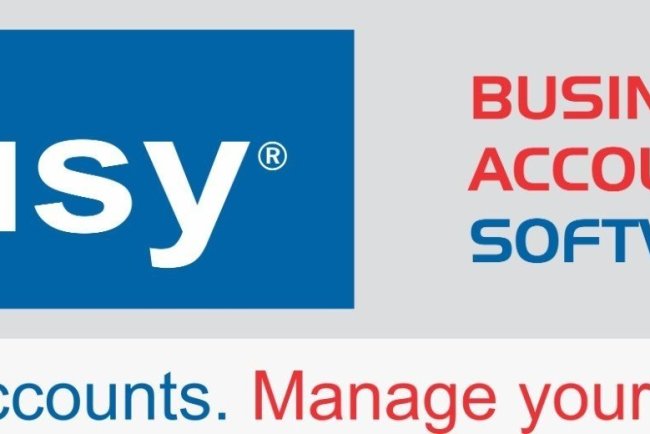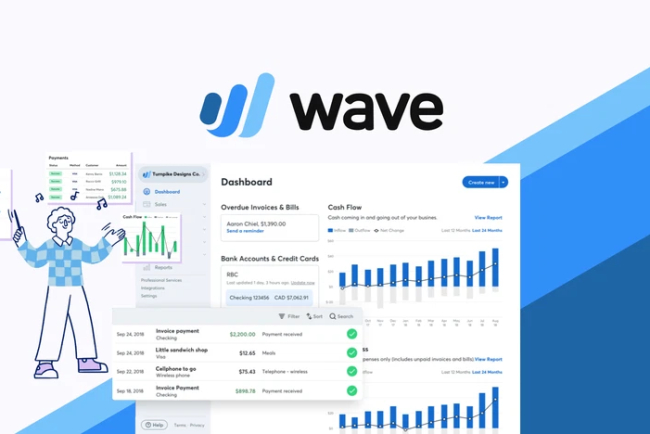How Profitable Are Small Accounting Firms?
"Small Accounting Firms Are Secretly Making 60-80% Profit Margins While Big Four Employees Get Salary Scraps" While corporate accountants earn fixed salaries, solo CPAs are quietly pocketing $120,000-$180,000 in pure profit annually. Small three-partner firms are splitting $200,000+ yearly profits with minimal overhead - numbers that destroy the "you need to be big to succeed" myth. The accounting industry's best-kept secret? Small firms consistently outperform massive corporations in profit margins. Solo practitioners hit 80% margins while Big Four partners split crumbs after corporate overhead eats everything. Are you trading potential six-figure profits for the false security of a corporate paycheck?

Introduction
The accounting industry has long been considered a stable and lucrative profession, but the financial reality varies significantly between large multinational firms and smaller practices. While the Big Four accounting giants capture headlines with their billion-dollar revenues, thousands of small accounting firms across the globe quietly serve local businesses and individual clients, often operating with entirely different business models and profit structures.
Understanding the profitability of small accounting firms has become increasingly important for several reasons. Aspiring accountants consider whether starting their own practice offers better financial prospects than working for established firms. Existing small firm owners seek benchmarks to evaluate their performance and identify growth opportunities. Additionally, clients and business partners want to understand the financial health of their accounting service providers to ensure long-term reliability.
The profitability landscape for small accounting firms is complex and influenced by numerous factors including geographic location, client mix, service offerings, operational efficiency, and market positioning. Unlike large firms that benefit from economies of scale and global reach, small practices must navigate unique challenges while capitalizing on their inherent advantages of personalized service and local market knowledge.
Recent industry studies suggest that small accounting firms can indeed be highly profitable when managed effectively, with some achieving profit margins that rival or exceed larger competitors. However, success requires strategic planning, efficient operations, and a clear understanding of the financial dynamics that drive profitability in this competitive industry.
The Business Model of Small Accounting Firms
Small accounting firms typically operate on a service-based business model that emphasizes building long-term relationships with clients rather than pursuing large-scale transactions. These firms generally serve between 50 to 500 clients, depending on their size and service offerings, with most focusing on small to medium-sized businesses and individual taxpayers within their local or regional markets.
The foundational structure of most small accounting firms revolves around leveraging professional expertise to solve financial problems for clients who lack the internal resources or knowledge to handle complex accounting, tax, and advisory matters. This model creates recurring revenue opportunities, as most clients require ongoing services throughout the year rather than one-time engagements.
Partnership structures are common among small accounting firms, allowing multiple professionals to share ownership, responsibilities, and profits while reducing individual risk and capital requirements. These partnerships often begin with two or three certified public accountants who combine their client bases and expertise to create a more robust practice than they could maintain individually.
The scalability of small accounting firms depends heavily on their ability to systematize processes, leverage technology, and develop staff capabilities. Successful firms create standardized procedures for common services, invest in accounting software and automation tools, and build teams that can handle routine work while partners focus on client relationships and strategic activities.
Geographic positioning plays a crucial role in the business model, as small firms typically serve clients within a specific radius of their offices. This local focus allows for personal relationships and face-to-face meetings but can limit growth potential unless the firm expands to multiple locations or develops remote service capabilities.
Key Revenue Streams
Small accounting firms generate revenue through several distinct service categories, each with different profit margins, seasonal patterns, and growth potential. Understanding these revenue streams is essential for evaluating overall profitability and identifying opportunities for expansion.
Tax Preparation and Planning
Tax services represent the largest revenue source for most small accounting firms, particularly during the traditional tax season from January through April. Individual tax returns, business tax filings, and tax planning consultations provide predictable annual income, though the seasonal nature creates cash flow challenges during slower periods.
The profitability of tax services varies significantly based on complexity and client requirements. Simple individual returns may generate modest fees but can be processed efficiently, while complex business returns and multi-state filings command higher rates and profit margins. Many firms use tax preparation as an entry point for client relationships, later expanding into year-round services.
Tax planning services offer higher profit margins than basic preparation, as they require more expertise and provide greater value to clients. Forward-thinking firms increasingly emphasize tax strategy and planning throughout the year rather than focusing solely on compliance during tax season.
Auditing and Assurance Services
While large firms dominate the audit market for public companies, small accounting firms serve an important niche providing audits, reviews, and compilations for privately held businesses, non-profit organizations, and government entities. These services typically generate higher fees per engagement than tax preparation but require significant professional expertise and liability insurance.
The recurring nature of audit engagements creates predictable revenue streams, as most clients require annual audits and often maintain relationships with the same firm for many years. However, audit work requires substantial time investments and carries professional liability risks that can impact profitability if not managed properly.
Quality control and professional standards compliance are critical for audit profitability, as errors or deficiencies can result in regulatory sanctions, legal liability, and reputation damage that far exceed the revenue generated by individual engagements.
Bookkeeping and Accounting Services
Monthly bookkeeping and accounting services provide steady recurring revenue throughout the year, helping smooth out the seasonal fluctuations common in tax-focused practices. These services range from basic transaction recording to comprehensive financial statement preparation and analysis.
The profitability of bookkeeping services depends heavily on efficiency and automation. Firms that leverage cloud-based accounting software and automated data entry can handle more clients with fewer staff hours, significantly improving profit margins. Conversely, firms relying on manual processes may find bookkeeping services less profitable due to high labor requirements.
Many small firms use bookkeeping as a foundation for building comprehensive client relationships, gradually adding tax preparation, planning services, and business consulting as trust and understanding develop.
Business Consulting and Advisory Services
Advisory services represent the highest profit margin opportunities for small accounting firms, as they leverage professional expertise to solve complex business problems and provide strategic guidance. These services include financial planning, business valuations, succession planning, and operational consulting.
The challenge with advisory services is that they require significant expertise and often involve non-routine w%ork that can be difficult to price accurately. However, successful advisory engagements often lead to long-term client relationships and referrals that generate substantial future revenue.
Technology consulting has emerged as a growing revenue stream, with many small firms helping clients select and implement accounting software, point-of-sale systems, and other business management tools.
Typical Cost Structures and Overheads
Understanding cost structures is crucial for evaluating profitability in small accounting firms, as these businesses face unique overhead challenges while competing on both price and service quality. The major cost categories include personnel expenses, office operations, technology investments, and professional requirements.
Personnel Costs
Staff salaries and benefits typically represent 40-60% of total expenses for small accounting firms, making human resource management critical for profitability. These costs include not only direct compensation but also payroll taxes, health insurance, retirement contributions, and professional development expenses.
The challenge for small firms lies in attracting and retaining qualified staff while maintaining competitive compensation levels. Many firms struggle with seasonal staffing needs, requiring temporary help during tax season while maintaining core staff year-round. This creates inefficiencies that larger firms can better absorb through diversified service offerings.
Professional development costs, including continuing education requirements for CPAs, add significant expenses but are essential for maintaining staff competency and professional licenses. Small firms often find it cost-effective to share training costs across multiple staff members and leverage online education options.
Office and Administrative Expenses
Traditional office expenses including rent, utilities, insurance, and communications typically account for 15-25% of total costs. However, the rise of remote work and cloud-based technologies has allowed many small firms to reduce these expenses significantly while maintaining service quality.
Professional liability insurance represents a substantial cost that varies based on the services offered and the firm's claims history. Audit services require higher coverage limits and premiums than tax preparation or bookkeeping, impacting the relative profitability of different service lines.
Administrative expenses including office supplies, postage, and general business costs can be controlled through careful management and technology adoption, though they represent a smaller portion of overall expenses.
Technology and Software Investments
Technology represents both a significant cost and a key profitability driver for small accounting firms. Essential software includes accounting systems, tax preparation programs, audit software, and practice management tools. These investments can range from a few thousand dollars annually for basic systems to tens of thousands for comprehensive integrated platforms.
The return on technology investment varies significantly based on implementation and utilization. Firms that fully leverage automated features and integration capabilities often see substantial productivity gains that more than offset software costs. However, firms that underutilize technology may find themselves paying high software fees without corresponding efficiency improvements.
Cloud-based solutions have reduced upfront technology costs while providing access to enterprise-level capabilities previously available only to larger firms. This leveling of the technology playing field has improved competitive positioning for well-managed small firms.
Professional and Regulatory Costs
Professional licenses, association memberships, and continuing education requirements create ongoing costs that are largely fixed regardless of firm size. These expenses include CPA license fees, professional association memberships, and mandatory continuing education programs.
Regulatory compliance costs, including peer review requirements and quality control procedures, add administrative burden and expense but are essential for maintaining professional standing and avoiding penalties.
Profit Margins Compared to Larger Firms
Small accounting firms often achieve profit margins that are competitive with or superior to larger firms, though the absolute dollar amounts may be significantly different. Industry data suggests that well-managed small firms can achieve net profit margins of 20-40%, comparing favorably to larger regional and national firms.
The key advantage for small firms lies in their lower overhead structures and more efficient operations. Without the bureaucracy and administrative layers common in large organizations, small firms can operate with leaner cost structures while maintaining high service quality. This efficiency advantage allows them to offer competitive pricing while preserving healthy profit margins.
However, small firms face challenges in achieving the revenue per employee levels common in larger firms. While a small firm partner might handle 200-300 clients personally, large firm partners often leverage teams of staff accountants and managers to serve significantly more clients and generate higher total revenues.
The seasonal nature of accounting work affects small firms differently than large ones. While large firms can shift resources between service lines and geographic markets to smooth out seasonal fluctuations, small firms often experience more dramatic swings in workload and cash flow throughout the year.
Risk management also differs significantly between small and large firms. Small firms may be more vulnerable to the loss of major clients or key personnel, while large firms can better absorb such losses through diversification. This risk profile affects both profitability and valuation metrics.
Challenges Small Firms Face in Scaling Profits
Growing profitability while maintaining service quality presents unique challenges for small accounting firms. The personal service model that attracts many clients can become a constraint when partners become bottlenecks for growth and decision-making.
Capacity Constraints
Most small accounting firms eventually reach capacity limits where adding more clients requires additional staff or longer working hours. The challenge lies in scaling operations while maintaining the personal relationships and service quality that differentiate small firms from larger competitors.
Many firms struggle with the transition from owner-operated practices to managed businesses with systematic processes and delegated responsibilities. This transition requires significant changes in mindset and operations that not all firm owners successfully navigate.
Seasonal capacity constraints are particularly challenging, as firms must balance the costs of maintaining year-round staff against the revenue peaks during tax season. Some firms address this through seasonal staffing, but this approach can create service continuity issues and additional training costs.
Technology Integration
While technology offers significant opportunities for efficiency gains, implementing new systems can be disruptive and expensive for small firms. The learning curve associated with new software can temporarily reduce productivity, and integration challenges can create operational problems if not managed carefully.
Many small firms underinvest in technology due to cost concerns or lack of technical expertise, limiting their ability to compete with more technologically advanced competitors. However, firms that successfully leverage technology often achieve significant competitive advantages and improved profitability.
Client Mix and Pricing
Small firms often struggle with pricing strategies, particularly when competing against larger firms or low-cost alternatives. The temptation to compete primarily on price can erode profit margins and create unsustainable business models.
Developing an optimal client mix that balances profitability, growth potential, and service requirements is challenging for small firms with limited resources. Some clients may generate high revenues but require disproportionate time and attention, while others may be highly profitable but offer limited growth potential.
Strategies to Increase Profitability
Successful small accounting firms employ various strategies to improve profitability while maintaining service quality and client satisfaction. These approaches focus on increasing efficiency, expanding service offerings, and optimizing client relationships.
Specialization and Niche Focus
Many profitable small firms develop specialized expertise in particular industries or service areas, allowing them to command higher fees and build strong reputations within their chosen niches. Industry specialization enables firms to develop deep knowledge and efficient processes that improve both service quality and profitability.
Common specialization areas include healthcare practices, construction companies, professional services firms, and non-profit organizations. These niches often have specific regulatory requirements and business challenges that create opportunities for specialized service providers.
Geographic specialization can also be effective, with firms developing expertise in local regulations, economic conditions, and business networks that provide competitive advantages over distant competitors.
Technology Adoption and Automation
Strategic technology adoption can dramatically improve profitability by reducing manual work, improving accuracy, and enabling staff to handle more clients efficiently. Key technology areas include automated data entry, digital document management, and integrated practice management systems.
Cloud-based solutions enable small firms to offer services that were previously available only from larger competitors, including real-time financial reporting, collaborative document sharing, and remote access capabilities.
Artificial intelligence and machine learning tools are beginning to impact the accounting industry, with applications in tax preparation, audit procedures, and financial analysis. Early adopters may gain significant competitive advantages as these technologies mature.
Value-Added Services
Expanding beyond traditional compliance services to offer strategic and advisory services can significantly improve profit margins and client relationships. These services leverage the firm's understanding of client businesses to provide insights and recommendations that go beyond basic accounting and tax compliance.
Business consulting, financial planning, and technology advisory services typically command higher hourly rates than traditional compliance work while strengthening client relationships and creating barriers to switching to competitors.
Training and support services, where firms help clients understand and utilize accounting software and business management tools, represent growing opportunities as technology becomes more complex and central to business operations.
Strategic Partnerships and Networking
Building relationships with complementary service providers can generate referrals and collaboration opportunities that expand the firm's effective service capabilities without requiring additional investment in staff or expertise.
Common partnership opportunities include relationships with attorneys, financial planners, business consultants, and technology vendors. These relationships can provide mutual referrals and enable joint service offerings that benefit all parties.
Professional organization involvement and community networking can generate new client relationships and enhance the firm's reputation within its target market.
Realistic Case Studies and Profit Scenarios
To illustrate the profitability potential of small accounting firms, consider several realistic scenarios based on industry data and common practice structures.
Solo Practice Scenario
A solo CPA with 150 individual tax clients and 25 small business clients might generate annual revenues of $180,000 to $220,000. With minimal overhead costs including home office expenses, software, and insurance, total expenses might range from $40,000 to $60,000 annually, resulting in net profits of $120,000 to $180,000, representing profit margins of 60-80%.
This scenario assumes efficient operations with good technology utilization and minimal staff costs. The high profit margin reflects the low overhead structure possible for solo practitioners, though it also represents significant personal time investment and limited growth potential.
Small Partnership Scenario
A three-partner firm serving 300 individual clients and 75 business clients with two full-time staff members might generate annual revenues of $450,000 to $550,000. Total expenses including partner draws, staff salaries, office rent, and operating costs might range from $320,000 to $380,000, resulting in net profits of $130,000 to $230,000 for distribution among partners.
This represents profit margins of 25-40%, which is typical for small firms with moderate overhead and efficient operations. The profits would be distributed among the three partners, providing each with draws plus profit distributions.
Growing Firm Scenario
A firm with six professional staff serving 200 business clients and 400 individual clients might generate revenues of $800,000 to $1,000,000 annually. With higher overhead including staff salaries, larger office space, and more sophisticated technology systems, total expenses might range from $600,000 to $750,000, resulting in net profits of $200,000 to $350,000.
This scenario represents profit margins of 25-35%, reflecting the higher overhead costs associated with larger operations while demonstrating the potential for absolute profit growth through successful scaling.
Optimizing Operations with Modern Business Tools
While traditional accounting expertise remains the foundation of small firm success, modern business management tools have become essential for optimizing operations and maximizing profitability. Just as accounting firms help their clients manage financial operations more effectively, firm owners must leverage technology to streamline their own business processes.
Integrated business management solutions can address many of the operational challenges that limit profitability in small accounting firms. Point-of-sale systems designed for service businesses can streamline billing and payment processing, reducing administrative overhead and improving cash flow management. Comprehensive customer relationship management platforms enable firms to track client interactions, manage service delivery, and identify opportunities for additional services.
Digital marketing tools have become increasingly important as traditional referral networks become more competitive and clients increasingly research service providers online. Social media marketing platforms and search engine optimization tools can help small firms build brand awareness and attract new clients cost-effectively.
Learning management systems can reduce the costs and complexity of staff training while ensuring consistent service delivery across all client engagements. These platforms enable firms to develop standardized training programs, track professional development requirements, and maintain quality control as operations scale.
Automation services can eliminate many of the routine administrative tasks that consume valuable time and reduce profitability. From automated appointment scheduling to document generation and client communication, these tools enable professional staff to focus on higher-value activities that directly contribute to client satisfaction and business growth.
At Gomsu Information Technologies, we understand the unique operational challenges facing small accounting firms and have developed integrated solutions that address these specific needs. Our comprehensive platform combines POS systems, CRM capabilities, social media marketing tools, learning management features, and automation services in a unified system designed specifically for professional service providers.
Take advantage of our special discounted pricing designed for growing accounting firms and professional service providers. Click here to know more. We at Gomsu aim to build trust and provide real value to growing businesses.
Conclusion
Small accounting firms can indeed be highly profitable ventures when managed strategically and operated efficiently. While they face unique challenges related to scaling, seasonal fluctuations, and competition from larger firms, successful small practices often achieve profit margins that rival or exceed their larger competitors.
The key to profitability lies in developing efficient operations, leveraging technology effectively, maintaining strong client relationships, and continuously adapting to changing market conditions. Firms that focus on specialization, embrace automation, and provide value-added services beyond basic compliance work position themselves for sustained profitability and growth.
The future of small accounting firms appears bright, with technology leveling the competitive playing field and creating new opportunities for efficient service delivery. Firms that invest in the right combination of professional expertise and business management tools will be best positioned to capitalize on these opportunities and build profitable, sustainable practices.
Success in the accounting profession requires more than technical knowledge – it demands business acumen, operational efficiency, and strategic thinking. Small firm owners who master these elements while maintaining their focus on client service and professional excellence can build highly profitable businesses that provide both financial rewards and professional satisfactiony.
If you found this blog helpful, please Like, Share, and Comment. If you have any doubts or suggestions, let us know – we would love to hear from you. Subscribe to our newsletter for more business insights and strategies that can help accelerate your professional practice growth journey.
What's Your Reaction?






















